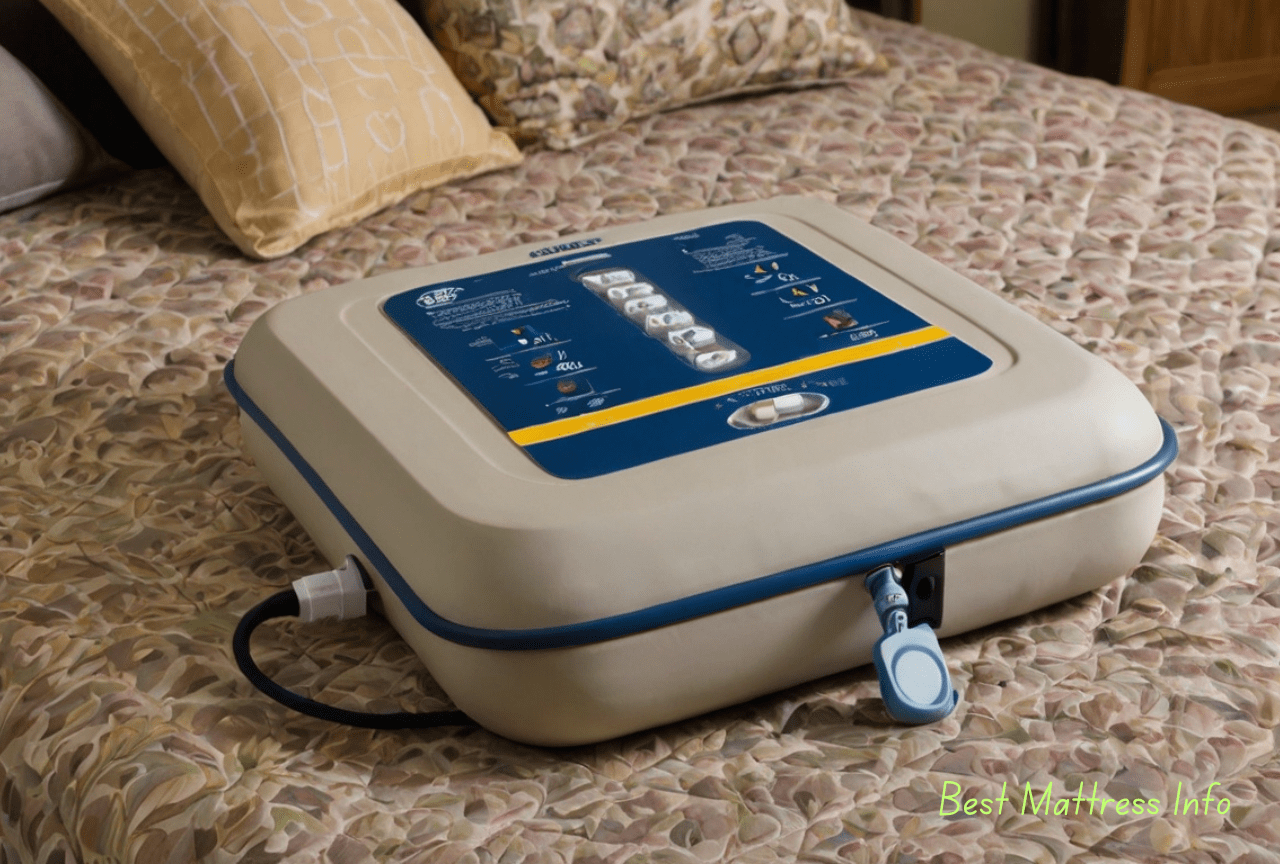Table of Contents
ToggleLow Pressure Air Mattress: Essential Troubleshooting Guide
Experiencing a low-pressure alarm on a Drive air mattress can be concerning. This alarm indicates that the mattress is not inflating to its required pressure, which can compromise its effectiveness and user comfort.
Several factors could trigger this alarm, including leaks, power issues, or incorrect settings. Identifying and resolving the problem quickly ensures that the mattress continues to provide optimal support.
Knowing how to troubleshoot common causes of low-pressure alarms is essential for caregivers and individuals who rely on these mattresses for their health and well-being.
Understanding Air Mattress Low Pressure

A low-pressure alarm in a drive air mattress ensures patient safety and comfort by signaling inadequate air pressure. Knowing how these alarms function and what causes them to trigger is essential for proper maintenance and response.
Mechanism of Action
Low-pressure alarms activate when the air pressure in the mattress falls below a safe threshold. They usually rely on pressure sensors embedded within the mattress.
These sensors continuously monitor pressure levels. When the pressure dips, a signal is sent to the control unit, which activates the alarm.
Key Components:
- Pressure sensors
- Control unit
- Alarm system
The alarm typically sounds and may also display visual indicators to alert caregivers quickly. Addressing the issue promptly is crucial to prevent patient discomfort or potential skin issues.
Common Causes for Low-Pressure Alarms
Several factors can trigger low-pressure alarms. One common issue is leaks in the mattress or the tubing. Regular inspection of these components is vital.
Potential Causes:
- Leaks: In the mattress or tubing
- Faulty Sensors: Malfunctioning sensors may give false readings
- Improper Setup: Incorrect installation or settings can affect pressure
Environmental part such as extreme temperatures and humidity can also impact the mattress’ performance. Regular maintenance helps identify and rectify these causes, ensuring the alarm remains an accurate and reliable indicator of low-pressure conditions.
Design Features of Drive Air Mattresses

Drive air mattresses incorporate cutting-edge pressure monitoring technologies and automatic adjustment functions designed to enhance comfort and promote better patient outcomes.
Pressure Monitoring Technologies
Drive air mattresses use advanced pressure sensors distributed across the mattress surface. These sensors continuously measure the pressure exerted on different body parts, helping to prevent pressure ulcers by distributing weight evenly.
The data from these sensors is analyzed in real-time. The mattress can alert caregivers through alarms if pressure levels are not optimal. This feature ensures immediate attention and intervention.
Some models utilize microprocessor-controlled systems. These systems offer precise adjustments and maintain consistent pressure levels. This technology is essential in providing customized care for patients with varying needs.
Automatic Adjustment Functions
Automatic adjustment functions allow the mattress to adapt to the patient’s movements and changes in position. This ensures uninterrupted comfort and support.
The mattress can automatically inflate or deflate individual air cells. This dynamic adjustment helps in relieving pressure points and ensures proper blood circulation.
Many Drive air mattresses have a user-friendly interface. Caregivers can easily set specific parameters and preferences, and the system manages the rest autonomously.
These features enhance patient comfort and reduce healthcare providers’ workloads. The seamless integration of automatic adjustments is critical in maintaining a therapeutic environment for patients.
Troubleshooting and Maintenance

Maintaining the Drive air mattress is crucial for its longevity and efficient functioning. This involves regular inspections and methodical troubleshooting to address any low-pressure alarms.
Routine Inspection Procedures
Regularly inspect the mattress and pump system. Check for visible damage on the mattress, such as tears or punctures. Ensure that the airlines are securely connected and free of kinks or obstructions.
Examine the power source and ensure the plug is securely connected. Inspect the air pump for any unusual sounds or vibrations, which can indicate internal issues. Keep the air filters clean to prevent
clean buildup, which can reduce efficiency.
Step-by-Step Troubleshooting Guide
Low-Pressure Alarm Triggering:
- Check Air Lines: Ensure all connections are tight.
- Inspect Mattress: Look for punctures; patch if found.
- Pump Function: Verify it’s operating; listen for unusual noise.
- Power Supply: Confirm that the plug is secure and the outlet is functioning.
Addressing these areas methodically can resolve many issues quickly. If the alarm persists despite these checks, it may indicate a more grave problem requiring professional service.
Frequently Asked Questions

Low-pressure alarms on Drive air mattresses signal potential issues that may affect the mattress’s performance and user comfort. This section addresses common concerns and provides helpful guidance.
Why does the low-pressure alarm sound on a low-air loss mattress?
A low-pressure alarm often sounds due to leaks, improper setup, or issues with the pump. These factors decrease the air pressure within the mattress, triggering the alarm to alert the user.
What are the troubleshooting steps for a Drive air mattress when experiencing issues?
First, check for visible leaks or punctures. Makesure all connections are secure and the pump is functioning. Inspect the air hoses for kinks and blockages and verify that the settings are correct per the user manual.
How can I find and replace parts for a Drive air mattress?
Replacement parts can be found through authorized Drive Medical distributors or the Drive Medical website. Identify the specific part needed using the mattress model number and review the installation instructions for the replacement component.
What are the differences between low air loss and alternating demand mattresses?
Low air loss mattresses continuously blow air to manage moisture and heat. Alternating pressure mattresses shift the pressure between cells to prevent pressure sores. Both are designed to enhance patient comfort and care but use different technologies.
How do I correctly use the static mode on a Drive air mattress?
Press the designated button on the pump to activate static mode. This function disables the alternating pressure to provide a firm, stable surface, which can be helpful during medical procedures or when transferring a patient.
What is the average inflation time for a low air loss mattress?
The average inflation time for a low air loss mattress ranges from 20 to 30 minutes. This can vary-depending on the particular model and ambient conditions. Always-refer to the user manual for precise information.










